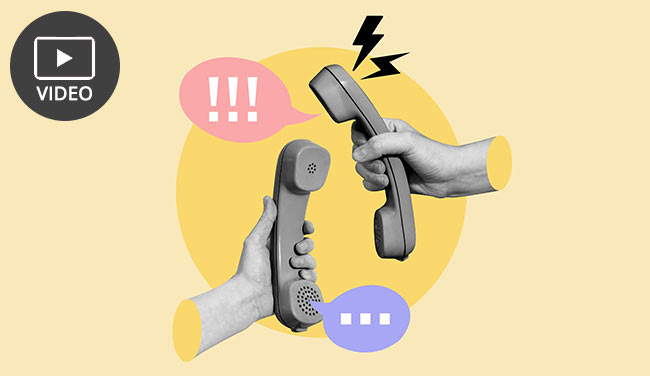5th September 2025

When one customer raises a concern, there’s a strong chance others are facing the same problem.
But many contact centres struggle to identify these recurring issues quickly due to disconnected systems and manual processes.
Fortunately, AI built for customer experience (CX), combined with cloud technology, can help uncover patterns and resolve problems before they grow.
To find out more, we asked Elizabeth Tobey, Head of Marketing, Digital Solutions at NiCE, to explain how a customer who complains is unlikely to be the only one facing the issue
Watch the video below to hear Elizabeth explain how a customer who complains is unlikely to be the only one facing the issue.
With thanks to Elizabeth Tobey, Head of Marketing, Digital Solutions at NiCE, for contributing to this video.
This video was originally published in our article ‘Key Signs of Broken Processes (and How to Fix Them)’
Many organizations miss repeated problems because their systems are fragmented and outdated, as Elizabeth explains:
“Usually when one customer complains about an issue with a product or service, it’s likely they are not the only customer facing this problem.
However, traditionally it’s been hard for organizations to find these patterns and address them due to siloed manual processes and on-premise technology.”
Traditionally, teams manage customer interactions separately, with no unified view across channels. This makes it difficult to identify patterns in complaints or service failures.
Older, on-site systems restrict data sharing and slow down access to insights. Without shared visibility, teams can’t collaborate effectively to resolve widespread issues.
AI tools built for CX can analyse all customer interactions and detect recurring themes automatically.
“With AI purpose built for CX, paired with an interaction-centric cloud platform, organizations can manage all of their interactions in one place and also have a historical, real time, 360° view of operations at all times. AI analyses every interaction and identifies historic trends and patterns.
This means it can pick up on certain keywords being used across any and all interactions, and identify when there is a common problem. It can also generate next-best actions to resolve the issue going forward.”
Rather than relying on a sample of calls or messages, AI can analyse 100% of interactions. It looks for keywords, tone, and sentiment to flag recurring problems.
AI doesn’t just show what’s happening now – it can also identify issues that have built up over time. This lets teams address long-term pain points more effectively.
Once a problem is identified, AI can suggest what to do next, whether that’s updating a product, notifying teams, or launching a proactive customer message.
A cloud-based platform allows AI to do its job by making the entire customer experience ecosystem accessible and connected, as Elizabeth explains:
“Being on a cloud platform is vital to achieve this. It opens up data sharing across teams, workflows, and throughout your entire CX ecosystem, so that AI can effectively do its job.”
Cloud systems bring together interactions from voice, chat, email, and more into one place. This gives AI the context it needs to draw accurate insights.
With shared access to data, teams can act on insights faster and coordinate responses to customer issues across departments.
By constantly analysing data and tracking results, cloud-powered AI creates a feedback loop that improves CX over time.
If you are looking for more great insights from the experts, check out these next:
Reviewed by: Xander Freeman